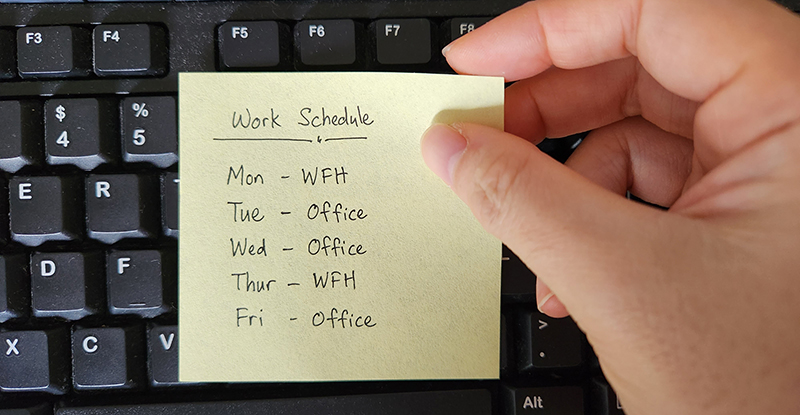
“Would you like some feedback?” How did you feel the last time someone asked you that? Most people don’t get excited when they hear those words even though, with technology and globalization transforming our workplaces, the need to learn and improve is greater than ever before.
Traditional feedback, given once a year through a performance review, is out of sync with today’s need to learn in real time. One survey found that 95% of managers are dissatisfied with the way their companies conduct performance reviews and are shifting to continuous performance management systems that incorporate frequent check-ins, goal evaluation, and feedback.
Along with helping us learn, feedback supports a growth mindset at work – one where the organization is committed to creating a culture that supports learning, openness, and dialogue; and one where individuals are willing and excited to embrace change, improve, and tackle challenges.
Traditional feedback: Why it doesn’t work
Receiving feedback in its conventional form – annually on a performance report, or after a project has gone wrong, or out of the blue – is not working. This kind of feedback creates a threat response – it makes us feel attacked (you did this wrong), or that our work isn’t valued (this isn’t good enough), or insulted. Even constructive criticism often puts people in a more rigid, self-protective state.
As people who provide feedback as well as receive it, we should avoid asking, “Would you like some feedback?” unless we want to see people get defensive. We’d also do well to avoid the “sandwich” technique – when we say how well someone is doing, tell them they need to do something better, and end with “keep up the good work.” It feels contrived and patronizing to most people.
So how do we fix feedback?
Get the feedback you need: Ask!
We need to stop giving feedback and start asking for it – and we can do this by having feedback conversations. Feedback conversations can be initiated by anyone anytime. They should be motivated by a desire to learn and improve. When they occur naturally and regularly, they signal an open, trusting, and respectful workplace where people expect to learn and grow.
Having feedback conversations is a hands-on way for us to manage the feedback process, as well as our own learning at work. When we ask for feedback, we are the ones in control, and we tend to ask people we trust and respect, making us more likely to act on their input. Essentially, feedback conversations enable us to create a culture where, when we need input, we go to the right person at the right time and ensure we’re having the right conversation.
So what do feedback conversations look like? They are often informal, happening while chatting over coffee, reviewing a piece of work, or dropping into someone’s office to ask a question. You can start one using these steps:
- Set a clear expectation for learning: That is, before the conversation, identify what you want to learn and the kind of information that will be most helpful. Focusing on learning helps reframe critical feedback as information that will help us grow.
- Be ready to commit to self-improvement: Once our work is seen as an opportunity to continue improving and doing better work, we are less likely to feel anxious about feedback conversations.
- Identify the kind of feedback you want: Are you looking for encouragement and support (helpful when learning a new role or skill), coaching (direction on skills or knowledge to apply) or evaluation (an assessment of your performance)?
- Ask questions that will help you learn: During the conversation, acknowledge the area you would like to improve in and request the information that will help you improve. Questions can include, “Where do you see room for growth?” “What is something you think I could learn from you?”
- Be open-minded: Find the nuggets of information you can use from the conversation. You certainly don’t have to agree with all feedback – but do your best to be receptive and gracious. Look for what could be true and ask questions such as, “What do you mean by that?” “What is most important here?”
Review what worked and what didn’t
After a feedback conversation, evaluate how it went. Notice what triggered you. You might have trouble hearing feedback if you don’t believe it is accurate. Or it might be hard to take feedback from someone you think lacks the skill or trait they’ve identified as lacking in you. Recognizing a trigger can help you decide how you want to process the feedback. You can investigate it further, think about how to better manage your response to this type of feedback, or let it go.
Then, identify your takeaways from the conversation and make a plan to take action. Determine what you will do differently going forward. Circle back to ensure you are improving and making changes. You might want to keep a feedback journal and note what you were told, what you took away from it, and your action and progress.
All in all, having feedback conversations allows the feedback process – and by extension, our learning – to be more self-directed and inspiring. Ultimately, these conversations are about helping people do better.
Tammy Robertson has over 25 years of experience working with CPAs from BC to NL, providing leadership and personal development seminars and keynote presentations at conferences and training days. As a life and leadership coach to leaders both in industry and public practice, author, and professional speaker, Tammy inspires and challenges you to step into your true potential.



